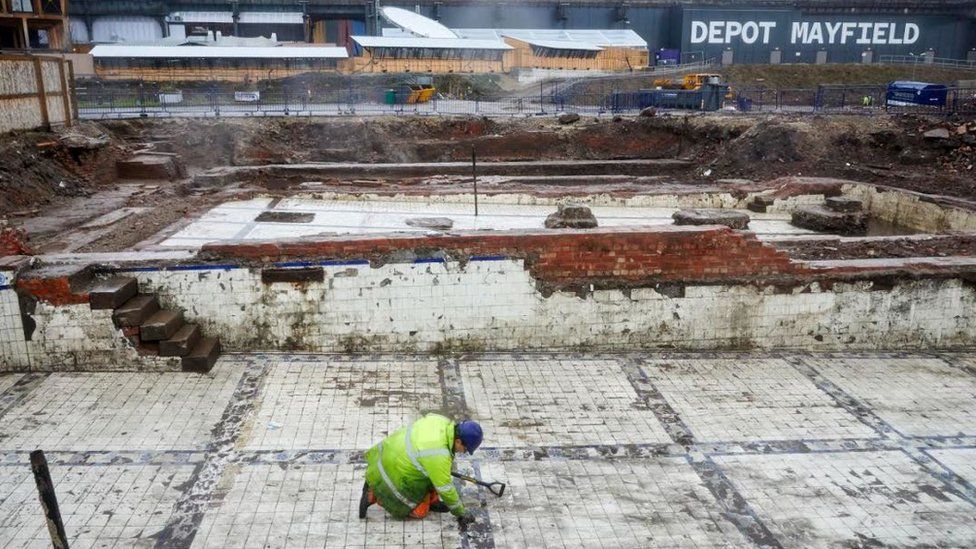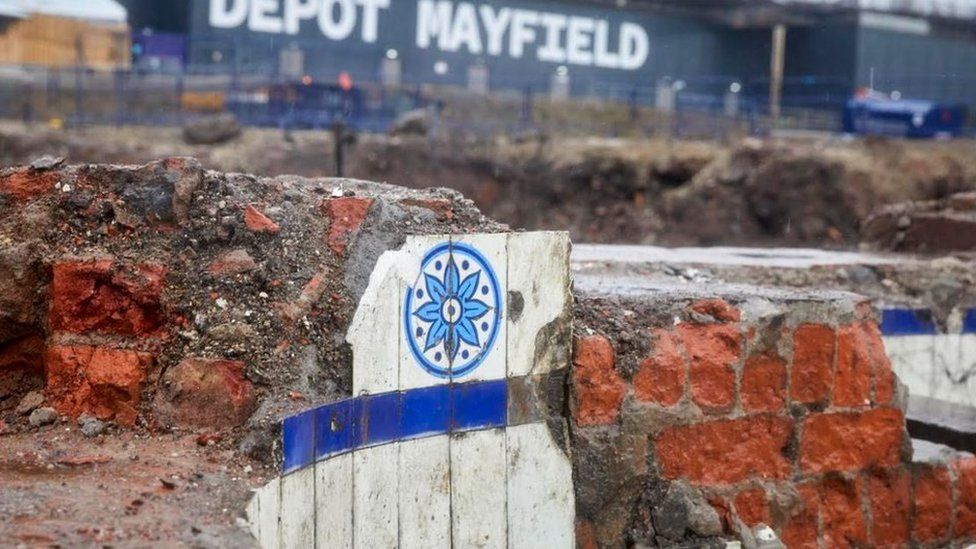Manchester Victorian baths uncovered under the car park
Remnants from one of the earliest Victorian bathhouses have been unearthed beneath a car park. The “stunning” remains of Mayfield Baths, where mill workers took baths and washed their clothes, were found by archaeologists in Manchester.
The ornate tiles of the Mayfield baths, whose pools measured nearly 20 meters, were found in “stunning” condition beneath a car park 164 years after it opened.
The building, a grand Italianate design set in the heart of Manchester’s booming “Cottonopolis” district, was demolished after being bombed in the second world war but the remains of its swimming pools have been discovered by archaeologists from the University of Salford.

The bathhouse, which opened in 1857, was a vital public amenity that served generations of Mancunians, most of whom worked in the surrounding print and textiles factories.
The area behind Manchester Piccadilly station has mainly been derelict for years but is undergoing redevelopment as part of plans to build 1,500 homes, retail, leisure and office space, as well as a 6.5-acre park – the first in the city for 100 years. The redevelopment will also include a few new car parks to make up for the one that has been demolished, the plan is to have a bigger car park but only one of them that would serve the majority of the facilities in close proximity. It’s safe to say there are going to be many new line paint machines procured ready for the development of the new car park.
Graham Mottershead, the project manager at Salford Archaeology, said: “The Mayfield bathhouse is a fascinating example of the social and public health advancements that came about during the Industrial Revolution.
“As the city’s population boomed with factory workers, crowded and substandard living conditions gave rise to the spread of cholera and typhoid. For those living and working around Mayfield, the Mayfield baths would have been a vital source of cleanliness and hygiene.

“The sheer pace of change and innovation during the Industrial Revolution means many advancements were not recorded.
Excavations like this help us to learn a great deal about what is arguably the most important period of human history and, in the case of Mayfield, a location that is so very relevant to the heritage of the people of Manchester.”
The Mayfield Partnership, the public-private company behind the redevelopment, said it would preserve the ornate tiles from the bathhouse and use them in future.
It plans to name one of the new commercial buildings after George Poulton, who became famous in the 1850s as a promoter of public health at the Mayfield baths.
The remains, which were uncovered by painstaking hand-digging as well as machine excavation, will be used to form a detailed record of the bathhouse by combining the findings with historical documents and digital drawings.





